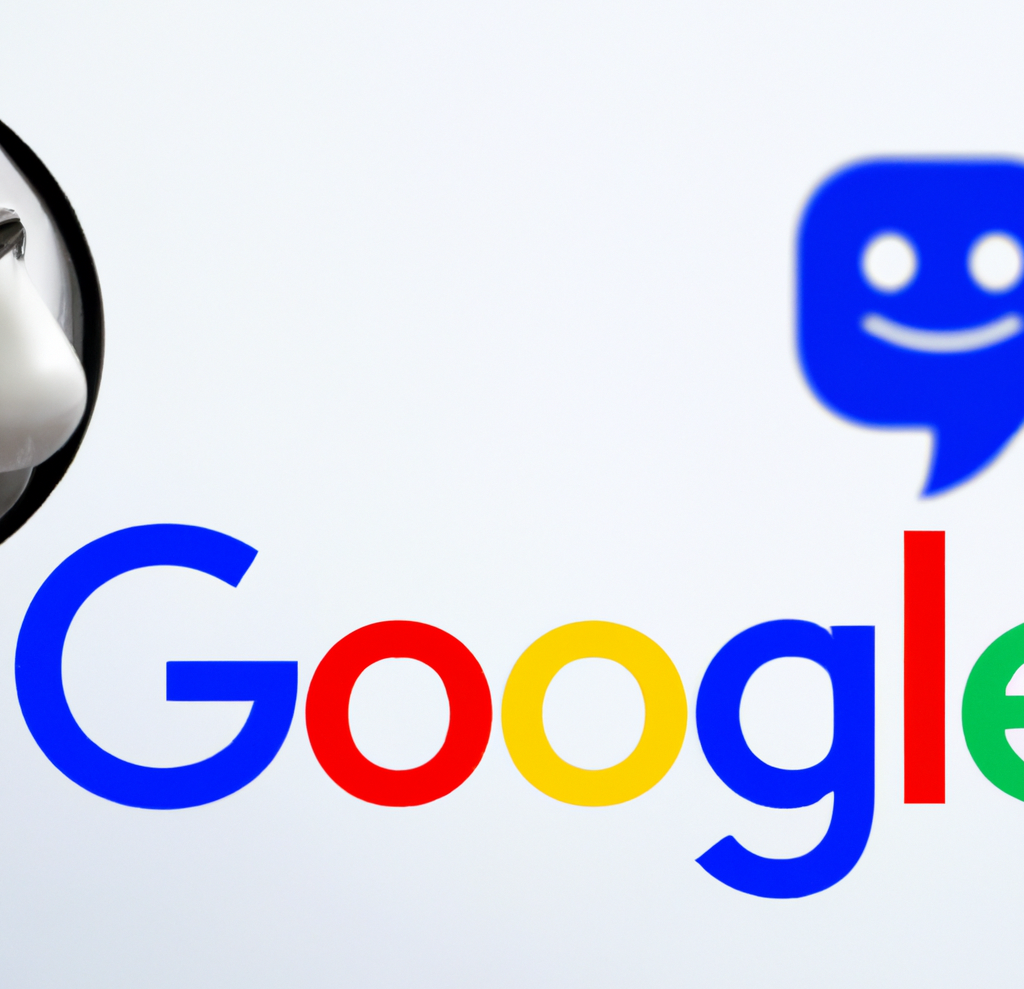Google: Zero Click Claims Are Misleading

Google published an article aiming to debunk claims by SparkToro that only 35% of searches resulted in a click. Google contradicted those assertions with facts about the real-world context of searches today, stating that the findings about zero click searches are misleading.
An inconvenient truth that SparkToro might not have known about is that, rather than “steal” visits to websites, Google has yearly increased the number of visitors it sends to websites.
SparkToro claims that less clicks are going to websites. Google shared that they have increased the number of visitors to websites every year.
“We send billions of visits to websites every day, and the traffic we’ve sent to the open web has increased every year since Google Search was first created.
…we’ve seen that as we’ve introduced more of these features over the last two decades, the traffic we’re driving to the web has also grown — showing that this is helpful for both consumers and businesses.”
Mixed Reactions in Search Marketing Community
SparkToro’s claims that Google is sending less percentage of visitors to websites every year is seemingly incompatible with the fact that Google is sending more visitors to websites every year.
But the search marketing community was divided in its reaction to the “facts” presented by Google.
Search marketing expert Ammon Johns (@Ammon_Johns) commented on Facebook:
“Usually Google are a lot better than this at spinning BS. I’m disappointed.
Nothing in the piece in any way denies or counters the valid observation that despite overall search traffic increasing, including outward, Google have continually worked tirelessly on capturing and owning an ever larger share of it, and actively worked on multiple measures to have an ever increasing proportion of searches never leave Google or a Google owned property.
This ludicrously obvious article, in attempting to switch from proportional to absolute numbers as if we wouldn’t notice, is frankly patronizing, and offensively so.”
Another member of the search community said that it’s within the realm of possibility that zero clicks are up and that Google sends more visitors every year, but that it’s not valid to say that Google is “stealing” traffic.
Ok zero clicks. We can’t discuss the data and what it includes or doesn’t because we’ll never see the data. It can be true that 0-clicks are up AND clicks to websites are up. It’s not a valid conclusion that Google is “stealing” traffic – only that searcher behavior is changing
— Ryan Jones (@RyanJones) March 24, 2021
SparkToro Claims Are Misleading
Google called the SparkToro Zero Click claims misleading:
“To set the record straight, we wanted to provide important context about this misleading claim.”
Significant Problems with SparkToro “Research”
SparkToro made waves in 2019 with a research study claiming that less than 50% of searches resulted in a click and the idea was promoted from the search industry all the way to the halls of Congress where it was held up as evidence against Google.
But there were many problems with that 2019 report.
One of the many flaws was that the data contained Google App searches that are not tracked and therefore they could not know if the search result was clicked or not.
There are more flaws but I’ll set those aside for now because I want to highlight what a professional statistician said about those earlier claims because the flaws she pointed out in the 2019 report may carry over to the latest SparkToro research.
According to a professional statistician Jennifer Hood, the 2019 SparkToro research reached a flawed conclusion (Do We Have the Math to Truly Decode Google’s Algorithms?).
She pointed out that the 2019 SparkToro research suffered from Availability Bias.
Availability Bias is a cognitive bias that results in believing that something is representative of most things when in fact it is limited in scope.
A website about different biases offers this definition of availability bias:
“A distortion that arises from the use of information which is most readily available, rather than that which is necessarily most representative.”
This is what the professional statistician said about the 2019 SparkToro findings about the so-called Zero Click search results:
“Rand says he estimates that Jumpshot’s data contains ‘somewhere between 2-6% of the total number of mobile and desktop internet-browsing devices in the U.S., a.k.a., a statistically significant sample size…’ Rand would be right about statistical significance IF the Jumpshot data were a truly random and representative sampling of all Google searches.
From what I could find, [Jumpshot] harvested all their data from users who used Avast antivirus… This set of users and their data likely differs from all Google users.
This means that the sample Jumpshot provides isn’t random and likely not representative enough – a classic sampling error usually referred to as Availability Bias.”
This same bias may affect the current 2021 research in that it does not represent a true random sampling because it represents data from the SimilarWeb’s “proprietary panel of tens of millions of users who have installed” their apps (according to the SimilarWeb FAQ about the origins of their data).
Statistics Without Context are Problematic
Another issue that the statistician raised with the 2019 research that also plagues the 2021 research is a lack of context.
A problem she cited with the 2019 SparkToro zero click research is a lack of context.
“Statistics without context should always be taken with a grain of salt.
This is why there are analytics experts to raise questions and give context. What types of questions are people asking, and how have these maybe changed?”
She is making reference to the kinds of searches that lead to zero clicks and asks if there is a legitimate reason for not having a click.
Examples are searches for a phone number or the lyrics to a song. These are contexts of searches and if these contexts are things that are changing because more people rely on mobile devices then the conclusion that Google is stealing clicks fails to hold up.
And that is one of many problems with both the 2019 and the 2021 research that Google called “misleading.”
SEO Community Questions Validity of SparkToro Zero Click Research
It’s not just Google that pulled the curtain aside on the research. Members of the search community stood up to question it as well.
Glenn Gabe questioned the research specifically because it lacked context, which is what the statistician found problematic about the previous research.
Also, I hope you believe this topic is nuanced & needs context. I think it’s impossible to look at a top-level # like that w/something as complex as Search & say definitively that X% of searches are zero-click. Again, tons of searches for quick info w/no intention of clicking.
— Glenn Gabe (@glenngabe) March 22, 2021
Rand Fishkin disagreed.
This topic is WAY too nuanced to not provide a breakdown. Hard to believe you don’t agree with that… Context is *essential*. Intent is huge. So I think we should agree to disagree. 🙂
— Glenn Gabe (@glenngabe) March 22, 2021
Google Calls SparkToro Report Misleading and Lacking in Context
One of the criticisms Google raised with the SparkToro report was a lack of context. The author (Google Search Liaison Danny Sullivan) also raised the issue that people use search differently than in the past and that can result in search queries that require an instant answer but do not need a click.
Here is what Google published:
“…this claim relies on flawed methodology that misunderstands how people use Search.
In reality, Google Search sends billions of clicks to websites every day, and we’ve sent more traffic to the open web every year since Google was first created.
And beyond just traffic, we also connect people with businesses in a wide variety of ways through Search, such as enabling a phone call to a business.”
That last part is an important point. People use search to connect with businesses in ways that go beyond clicking to a website, like connecting through a phone call.
Phone related searches should arguably have been filtered out. But when questioned by Glenn Gabe about filtering out legitimate informational searches, Rand Fishkin doubled down on not filtering for context.
Strongly disagree with:
“it’s impossible to look at a top-level # like that w/something as complex as Search & say definitively that X% of searches are zero-click.”
In fact, I’d say the *only* way to definitely say what % of searches are zero-click is without any filtering.
— Rand Fishkin (@randfish) March 22, 2021
Google Offers Four Examples of Context
Google’s Danny Sullivan offered as examples four contexts for why a search would not result in a click.
- People reformulate their queries
- People look for quick facts
- People connect with a business directly
- People navigate directly to apps
Danny further explained how Google connects users with websites, products and businesses:
“Over the years, we’ve worked to constantly improve Google Search by designing and rolling out helpful features to help people quickly find what they’re looking for, including maps, videos, links to products and services you can buy directly, flight and hotel options, and local business information like hours of operation and delivery services.
In doing so, we’ve dramatically grown the opportunity for websites to reach people. In fact, our search results page, which used to show 10 blue links, now shows an average of 26 links to websites on a single search results page on mobile.”
Search Community Divided But Generally Agrees With Google
The response to Google’s rebuttal was fairly unanimous in agreeing with Google.
Ryan Jones tweeted:
What Danny blogged makes a lot of sense. People have evolved to use search in many ways that aren’t to go to a web page. And that’s not a bad thing.
— Ryan Jones (@RyanJones) March 24, 2021
Others cast doubt on the SparkToro methodology:
Imagine if a pollster would not disclose their methodology of gathering responses, how many responses they gathered, or what questions they asked.
Could it be right? Sure!
Do all polls have the potential to be wrong? Absolutely!But there’s a reason we value certain polls.
— Ben Cook (@BenjaminCook) March 24, 2021
More Signal Less Noise
The Internet has been plagued by clickbait and the meme-ification of information. The SEO industry has fallen victim to those trends as well. Search result correlation studies with dubious results have been a feature of the SEO community for many years.
The search community is beginning to stand against that kind of misleading information.
Citations
Google Search Sends More Traffic to the Open Web Every Year
Do We Have the Math to Truly Decode Google’s Algorithms?
AI
Exploring the Evolution of Language Translation: A Comparative Analysis of AI Chatbots and Google Translate

According to an article on PCMag, while Google Translate makes translating sentences into over 100 languages easy, regular users acknowledge that there’s still room for improvement.
In theory, large language models (LLMs) such as ChatGPT are expected to bring about a new era in language translation. These models consume vast amounts of text-based training data and real-time feedback from users worldwide, enabling them to quickly learn to generate coherent, human-like sentences in a wide range of languages.
However, despite the anticipation that ChatGPT would revolutionize translation, previous experiences have shown that such expectations are often inaccurate, posing challenges for translation accuracy. To put these claims to the test, PCMag conducted a blind test, asking fluent speakers of eight non-English languages to evaluate the translation results from various AI services.
The test compared ChatGPT (both the free and paid versions) to Google Translate, as well as to other competing chatbots such as Microsoft Copilot and Google Gemini. The evaluation involved comparing the translation quality for two test paragraphs across different languages, including Polish, French, Korean, Spanish, Arabic, Tagalog, and Amharic.
In the first test conducted in June 2023, participants consistently favored AI chatbots over Google Translate. ChatGPT, Google Bard (now Gemini), and Microsoft Bing outperformed Google Translate, with ChatGPT receiving the highest praise. ChatGPT demonstrated superior performance in converting colloquialisms, while Google Translate often provided literal translations that lacked cultural nuance.
For instance, ChatGPT accurately translated colloquial expressions like “blow off steam,” whereas Google Translate produced more literal translations that failed to resonate across cultures. Participants appreciated ChatGPT’s ability to maintain consistent levels of formality and its consideration of gender options in translations.
The success of AI chatbots like ChatGPT can be attributed to reinforcement learning with human feedback (RLHF), which allows these models to learn from human preferences and produce culturally appropriate translations, particularly for non-native speakers. However, it’s essential to note that while AI chatbots outperformed Google Translate, they still had limitations and occasional inaccuracies.
In a subsequent test, PCMag evaluated different versions of ChatGPT, including the free and paid versions, as well as language-specific AI agents from OpenAI’s GPTStore. The paid version of ChatGPT, known as ChatGPT Plus, consistently delivered the best translations across various languages. However, Google Translate also showed improvement, performing surprisingly well compared to previous tests.
Overall, while ChatGPT Plus emerged as the preferred choice for translation, Google Translate demonstrated notable improvement, challenging the notion that AI chatbots are always superior to traditional translation tools.
Source: https://www.pcmag.com/articles/google-translate-vs-chatgpt-which-is-the-best-language-translator
Google Implements Stricter Guidelines for Mass Email Senders to Gmail Users

Beginning in April, Gmail senders bombarding users with unwanted mass emails will encounter a surge in message rejections unless they comply with the freshly minted Gmail email sender protocols, Google cautions.
Fresh Guidelines for Dispatching Mass Emails to Gmail Inboxes In an elucidative piece featured on Forbes, it was highlighted that novel regulations are being ushered in to shield Gmail users from the deluge of unsolicited mass emails. Initially, there were reports surfacing about certain marketers receiving error notifications pertaining to messages dispatched to Gmail accounts. Nonetheless, a Google representative clarified that these specific errors, denoted as 550-5.7.56, weren’t novel but rather stemmed from existing authentication prerequisites.
Moreover, Google has verified that commencing from April, they will initiate “the rejection of a portion of non-compliant email traffic, progressively escalating the rejection rate over time.” Google elaborates that, for instance, if 75% of the traffic adheres to the new email sender authentication criteria, then a portion of the remaining non-conforming 25% will face rejection. The exact proportion remains undisclosed. Google does assert that the implementation of the new regulations will be executed in a “step-by-step fashion.”
This cautious and methodical strategy seems to have already kicked off, with transient errors affecting a “fraction of their non-compliant email traffic” coming into play this month. Additionally, Google stipulates that bulk senders will be granted until June 1 to integrate “one-click unsubscribe” in all commercial or promotional correspondence.
Exclusively Personal Gmail Accounts Subject to Rejection These alterations exclusively affect bulk emails dispatched to personal Gmail accounts. Entities sending out mass emails, specifically those transmitting a minimum of 5,000 messages daily to Gmail accounts, will be mandated to authenticate outgoing emails and “refrain from dispatching unsolicited emails.” The 5,000 message threshold is tabulated based on emails transmitted from the same principal domain, irrespective of the employment of subdomains. Once the threshold is met, the domain is categorized as a permanent bulk sender.
These guidelines do not extend to communications directed at Google Workspace accounts, although all senders, including those utilizing Google Workspace, are required to adhere to the updated criteria.
Augmented Security and Enhanced Oversight for Gmail Users A Google spokesperson emphasized that these requisites are being rolled out to “fortify sender-side security and augment user control over inbox contents even further.” For the recipient, this translates to heightened trust in the authenticity of the email sender, thus mitigating the risk of falling prey to phishing attempts, a tactic frequently exploited by malevolent entities capitalizing on authentication vulnerabilities. “If anything,” the spokesperson concludes, “meeting these stipulations should facilitate senders in reaching their intended recipients more efficiently, with reduced risks of spoofing and hijacking by malicious actors.”
Google’s Next-Gen AI Chatbot, Gemini, Faces Delays: What to Expect When It Finally Launches

In an unexpected turn of events, Google has chosen to postpone the much-anticipated debut of its revolutionary generative AI model, Gemini. Initially poised to make waves this week, the unveiling has now been rescheduled for early next year, specifically in January.
Gemini is set to redefine the landscape of conversational AI, representing Google’s most potent endeavor in this domain to date. Positioned as a multimodal AI chatbot, Gemini boasts the capability to process diverse data types. This includes a unique proficiency in comprehending and generating text, images, and various content formats, even going so far as to create an entire website based on a combination of sketches and written descriptions.
Originally, Google had planned an elaborate series of launch events spanning California, New York, and Washington. Regrettably, these events have been canceled due to concerns about Gemini’s responsiveness to non-English prompts. According to anonymous sources cited by The Information, Google’s Chief Executive, Sundar Pichai, personally decided to postpone the launch, acknowledging the importance of global support as a key feature of Gemini’s capabilities.
Gemini is expected to surpass the renowned ChatGPT, powered by OpenAI’s GPT-4 model, and preliminary private tests have shown promising results. Fueled by significantly enhanced computing power, Gemini has outperformed GPT-4, particularly in FLOPS (Floating Point Operations Per Second), owing to its access to a multitude of high-end AI accelerators through the Google Cloud platform.
SemiAnalysis, a research firm affiliated with Substack Inc., expressed in an August blog post that Gemini appears poised to “blow OpenAI’s model out of the water.” The extensive compute power at Google’s disposal has evidently contributed to Gemini’s superior performance.
Google’s Vice President and Manager of Bard and Google Assistant, Sissie Hsiao, offered insights into Gemini’s capabilities, citing examples like generating novel images in response to specific requests, such as illustrating the steps to ice a three-layer cake.
While Google’s current generative AI offering, Bard, has showcased noteworthy accomplishments, it has struggled to achieve the same level of consumer awareness as ChatGPT. Gemini, with its unparalleled capabilities, is expected to be a game-changer, demonstrating impressive multimodal functionalities never seen before.
During the initial announcement at Google’s I/O developer conference in May, the company emphasized Gemini’s multimodal prowess and its developer-friendly nature. An application programming interface (API) is under development, allowing developers to seamlessly integrate Gemini into third-party applications.
As the world awaits the delayed unveiling of Gemini, the stakes are high, with Google aiming to revolutionize the AI landscape and solidify its position as a leader in generative artificial intelligence. The postponed launch only adds to the anticipation surrounding Gemini’s eventual debut in the coming year.
-

 PPC6 days ago
PPC6 days ago19 Best SEO Tools in 2024 (For Every Use Case)
-
SEARCHENGINES5 days ago
Daily Search Forum Recap: April 19, 2024
-

 MARKETING7 days ago
MARKETING7 days agoEcommerce evolution: Blurring the lines between B2B and B2C
-
SEARCHENGINES6 days ago
Daily Search Forum Recap: April 18, 2024
-

 WORDPRESS6 days ago
WORDPRESS6 days agoHow to Make $5000 of Passive Income Every Month in WordPress
-

 SEO7 days ago
SEO7 days ago2024 WordPress Vulnerability Report Shows Errors Sites Keep Making
-

 WORDPRESS6 days ago
WORDPRESS6 days ago10 Amazing WordPress Design Resouces – WordPress.com News
-
WORDPRESS7 days ago
[GET] The7 Website And Ecommerce Builder For WordPress















